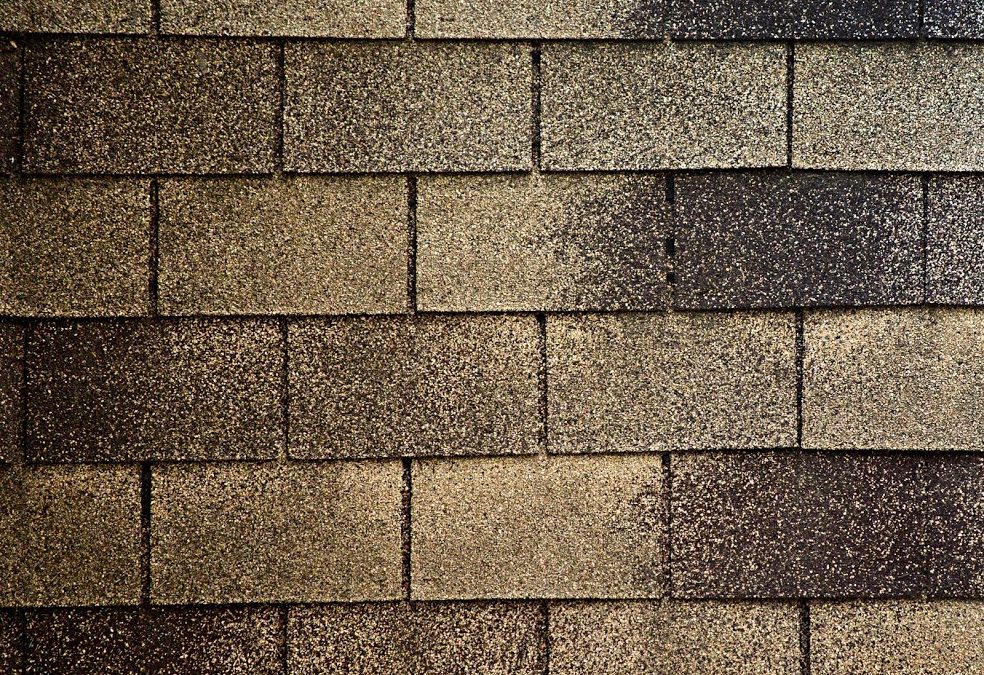Some signs of roof damage and roof granule loss can be difficult to detect. If your home in Colorado Springs has an asphalt shingle roof, understanding granule loss and knowing how to detect it are paramount to monitoring the health of your roof. Here is what you should know about asphalt shingle or roof granule loss.
What Are Shingle Granules?
Asphalt shingles are constructed with several layers that serve distinct purposes. The foundation of an asphalt shingle is a web of fiberglass fibers coated on either side with weather-resistant asphalt. Small pieces of crushed rock called granules are then added to the outside of the shingle.
The granules on the bottom of shingles are usually naturally colored and uncoated, while those on top are fired to create desirable colors for your roof.
In addition to improving the appearance of your roof, granules help protect asphalt shingles from physical damage and deterioration caused by UV light. Asphalt shingle granules provide an extra layer of flame-retardant material on the top of your roof, and they also make shingles more durable during the shipping and installation process.
Having a smooth roof in Colorado Springs is more dangerous to walk on than one that has ample traction. Asphalt shingle granules provide additional traction for when you or a contractor needs to walk on the roof. Granules can also be treated with a coating that inhibits the growth of blue-green algae, a common cause of unsightly roof stains.
What Are the Causes of Granule Loss?
Roof granule loss isn’t always something to be concerned about, and it’s normal for your shingles to shed some granules on their own over the years. However, it’s also important to understand the causes of premature granule loss so you can determine whether your roof is at risk.
The most common way to lose granules from your roof is when they are physically dislodged from the shingles. This can be the result of a tree branch scraping or falling on your roof, inclement weather in Colorado Springs such as high winds or hail, or simply walking on your roof.
In other cases, your roof may have had problems with granule loss from the start. Defective shingles can have excess granules that shed quickly, or the granules may not have been properly adhered to when they were manufactured. Low-quality shingles can also develop bald spots, where inconsistencies in the material makeup of the shingles cause large patches of the roof to shed granules.
Temperature fluctuations in Colorado Springs are also to blame for granule loss in asphalt shingles. The cycle of heating and cooling that causes your shingles to expand and contract can force some granules loose. Additionally, the heat from the sun can boil pockets of moisture inside the shingles and create blisters that quickly lose their granules.
How Can You Detect Problematic Granule Loss?
When you suddenly experience a large amount of roof granule loss in a short period of time, it’s cause for concern. Your gutters and downspouts come in handy for determining if your roof is shedding more granules than it should be. Check below your downspouts and inside your gutters; if you find a large collection of granules, you need a professional roof inspection in Colorado Springs.
Another way to detect problems with shingle granules is to visually inspect your roof. Much of the color of your shingles comes from the granules on the top layer. Any patches on your roof that look faded or discolored could be missing granules and will require closer inspection.
Hiring a roofing contractor to inspect your roof for granule loss can help you catch roof damage before it becomes more serious. Use these tips to monitor the health of your roof, and contact Empire Roofing and Restoration for a roof checkup in Colorado Springs!

